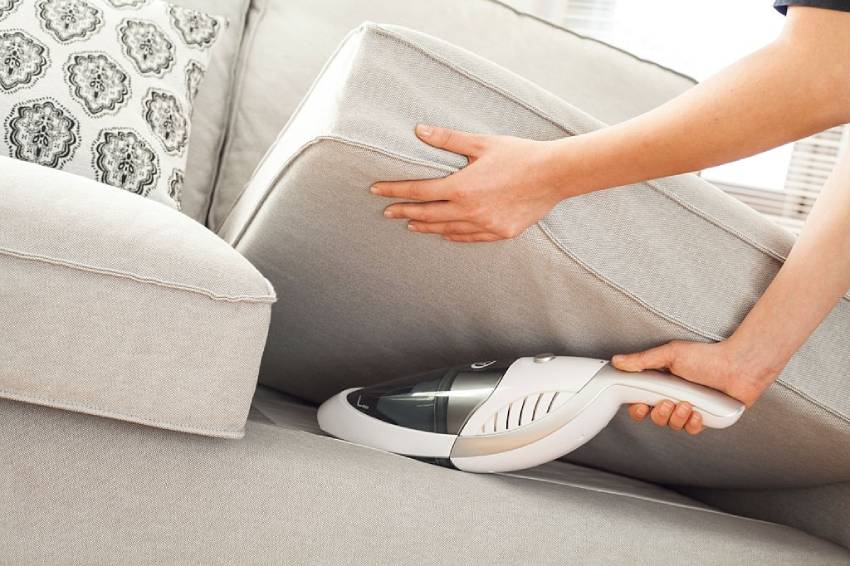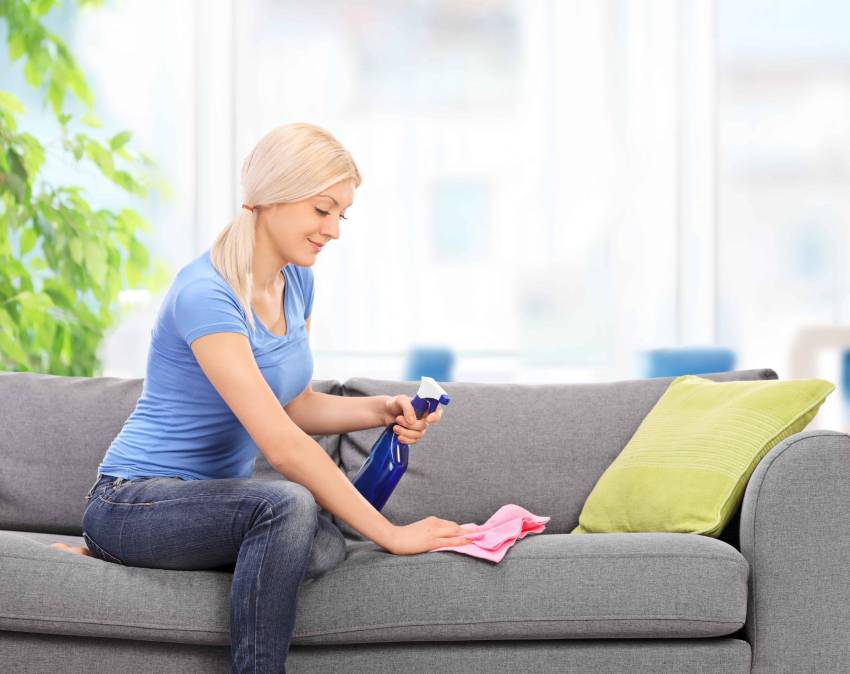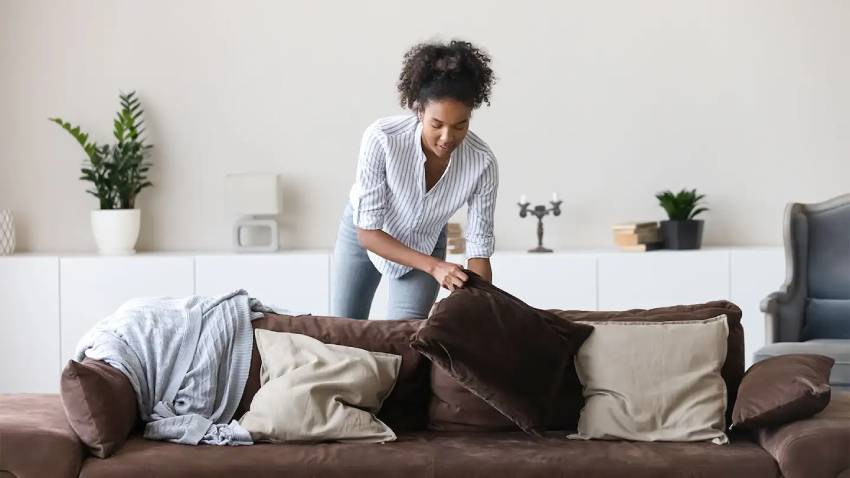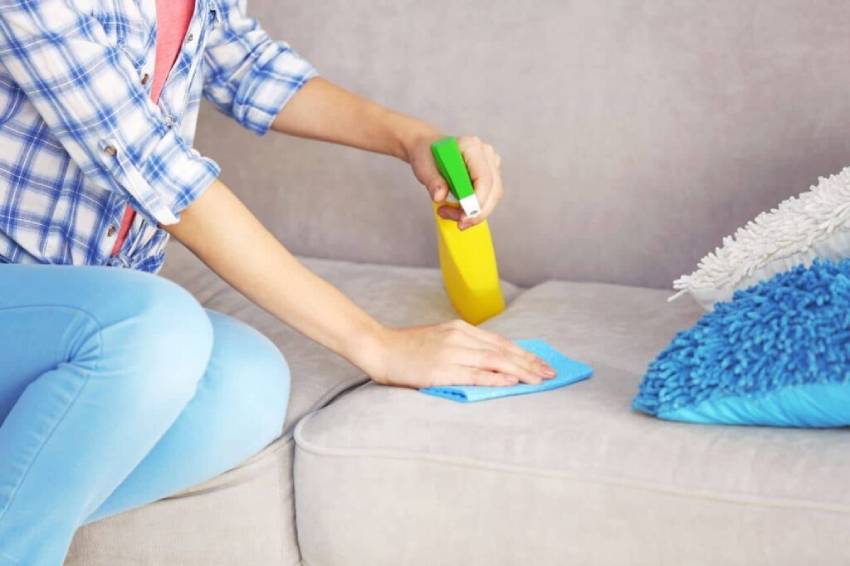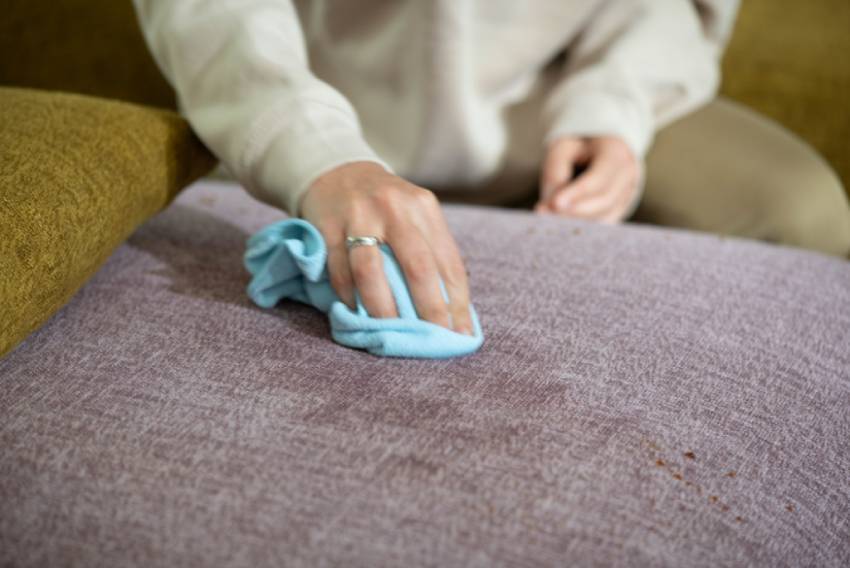Keeping a clean microfiber couch is essential for maintaining a comfortable, attractive, and hygienic living space. However, cleaning microfiber couches can be challenging due to the unique properties of the fabric. In this article, we provide an overview of the cleaning process, aiming to help you tackle this task effectively and efficiently.
Whether you’re a busy parent, a pet owner, or simply someone who appreciates a clean and organized home, understanding the best methods for cleaning a microfiber couch is crucial. Our professional and customer-focused approach ensures that you’ll receive clear, concise, and informative guidance to help you maintain a pristine living environment. So, let’s dive into the process of cleaning your microfiber couch and keeping it looking its best.
Identify the Couch’s Cleaning Code
Before you start cleaning your microfiber couch, it’s crucial to understand the cleaning codes. These codes indicate the appropriate cleaning methods for the fabric. They are usually found on the manufacturer’s care label. Here’s a brief explanation of the different cleaning codes:
- W: Use a water-based cleaning solution.
- S: Use a solvent-based cleaner only.
- W-S: Both water-based and solvent-based cleaners are suitable.
- X: Vacuum or use light brushing only. Do not use any type of cleaner.
Identifying the correct cleaning code is of utmost importance. Using the wrong cleaning method may lead to permanent damage or discoloration of your microfiber couch. Always adhere to the manufacturer’s care label to ensure the best results and protect the integrity of your couch’s fabric.
Gather Necessary Cleaning Tools and Supplies
Having the right tools and supplies at hand is essential for an efficient and effective cleaning process. Here’s a list of items you’ll need to clean your microfiber couch:
- Vacuum with crevice and upholstery tools: These attachments will help you remove dust, dirt, and debris from the couch’s surface and hard-to-reach areas.
- Spray bottle, soft-bristled brush or sponge, microfiber cleaning cloth: These items are essential for applying cleaning solutions and scrubbing the fabric gently without causing damage.
- Liquid dishwashing soap, water, rubbing alcohol, baking soda (optional): Depending on the cleaning code of your couch, you’ll need to prepare a water-based or solvent-based cleaning solution. Baking soda may be used for additional odor control if needed.
Gathering these tools and supplies beforehand will ensure a smooth and hassle-free cleaning experience. Remember that the success of the cleaning process depends not only on the technique but also on the quality of the tools and supplies used.
Regular Maintenance for a Microfiber Couch
Proper and consistent maintenance is key to keeping your microfiber couch looking its best and prolonging its life. By following a regular cleaning schedule, you can prevent dirt and stains from becoming embedded in the fabric. Here are some tips for maintaining a clean microfiber couch:
Vacuuming weekly: Use your vacuum with the crevice and upholstery tools to remove surface dust and dirt. This should be done at least once a week to prevent the accumulation of dirt, which can lead to more challenging stains and wear on the fabric.
Frequency of thorough cleaning: Depending on the level of use and presence of pets or children, your microfiber couch may require more frequent deep cleaning. A thorough cleaning should be done at least seasonally, or monthly for heavily used couches.
By following these regular maintenance tips, you can ensure your microfiber couch remains clean, fresh, and comfortable for years to come. Remember, maintaining a clean living environment is not only about aesthetics but also contributes to the overall health and well-being of your household.
How to Clean a Microfiber Couch with Soap Suds and Water (for W or W-S code)
If your microfiber couch has a W or W-S cleaning code, it can be safely cleaned with soap suds and water. Follow these steps to ensure a thorough and effective cleaning:
- Vacuum the couch: Before applying any cleaning solution, make sure to vacuum every surface of the upholstery, including the underside of cushions. This will help remove any loose dirt and debris that could cause further staining or damage during the cleaning process.
- Mix the cleaning solution: In a bucket or large bowl, combine warm water and liquid dishwashing soap. Use a whisk to create a generous amount of soapy suds.
- Apply soap suds and scrub gently: Using a soft-bristled brush or sponge, carefully dip into the soap suds (not the water) and gently scrub the fabric. Start at the top of a cushion or the couch back and work your way down, ensuring even coverage. Rinse the brush or sponge frequently in clean water and squeeze out excess moisture before applying more soap suds.
- Rinse and fluff the fabric: Once an area has been cleaned, dampen a microfiber cleaning cloth with plain water and gently wipe down the fabric. Allow the fabric to air-dry completely before using a vacuum or upholstery brush to fluff any matted fibers.
By following these steps, you can effectively clean a microfiber couch with a W or W-S cleaning code, ensuring a fresh and comfortable seating area for your home.
How to Clean a Microfiber Couch with Rubbing Alcohol (for S code)
For microfiber couches with an S cleaning code, you’ll need to use rubbing alcohol for effective cleaning. Follow these steps to ensure a thorough cleaning without damaging the fabric:
- Vacuum the couch: Start by vacuuming every fabric surface on the couch, including the underside of cushions. This will help remove any loose dirt and debris that could cause further staining or damage during the cleaning process.
- Apply rubbing alcohol using a spray bottle: Fill a spray bottle with rubbing alcohol and lightly spritz the fabric, starting at the top of a cushion or section. If using a commercial solvent-based product, follow the label directions.
- Scrub gently to remove soil: While the fabric is damp with rubbing alcohol, use a sponge, soft-bristled brush, or white cloth to gently remove dirt and stains. Rinse the sponge in plain water to remove soil and wring out excess moisture before continuing to clean.
- Allow the upholstery to air-dry and fluff any matted fibers: After cleaning, let the upholstery air-dry completely. Once dry, use a vacuum or upholstery brush to lift and fluff any matted fibers, restoring the fabric’s original appearance.
By following these steps, you can effectively clean a microfiber couch with an S cleaning code, ensuring a fresh and comfortable seating area for your home.
Tackling Tough Stains and Odors
Microfiber couches may occasionally be subject to stubborn stains and unpleasant odors. Here are some tips on how to tackle these issues effectively:
Grease stains: To remove grease stains, sprinkle cornstarch on the affected area and work it in with an old toothbrush. Allow it to sit for at least one hour before vacuuming away the cornstarch. Repeat if necessary. The cornstarch will absorb the oil, making it easier to spot clean the area with soap suds or rubbing alcohol.
Chewing gum: If you find chewing gum on your microfiber couch, use ice cubes to harden the gum, making it easier to gently remove. Once the gum is removed, spot clean the area with the appropriate cleaning method based on your couch’s cleaning code.
Odors: To eliminate odors from your microfiber couch, use baking soda. Sprinkle the baking soda onto the fabric and gently work it in with a soft-bristled brush. Let it sit for a few hours or overnight, then vacuum the baking soda away. This will help absorb and neutralize unpleasant smells.
By addressing tough stains and odors with these methods, you can keep your microfiber couch looking and smelling fresh, providing a comfortable and inviting seating area for your home.
In summary, maintaining a clean and fresh-looking microfiber couch involves understanding the cleaning codes, using the appropriate cleaning methods, and following a regular maintenance schedule. By adhering to these guidelines, you can prolong the life of your microfiber couch and provide a comfortable and inviting seating area for your home.
